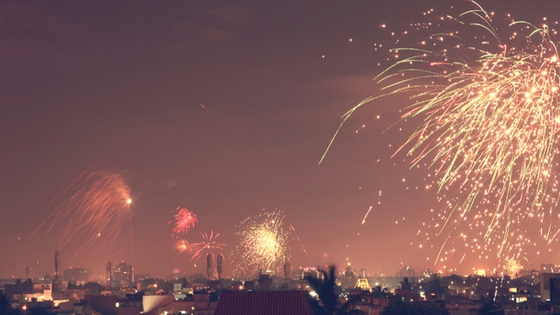This article was written by Sri Chinmoy Centre authors for the monthly IndiaNZ Outlook newspaper and features here with the paper’s kind consent.
Diwali is here – our annual free celebration of Indian culture and our city’s ethnic diversity, a weekend of music, dance, food and splendid cultural performances. Also too a festival of spirit, a remembrance of its original and deeper intent to celebrate the victory of light over darkness, knowledge over ignorance, good over evil.
In our dee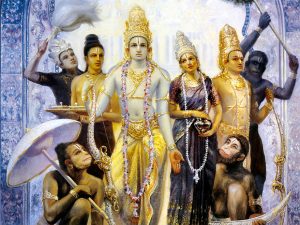 ply troubled modern world, this aspect of Diwali has profound significance, for Diwali commemorates the return of Lord Rama, his wife and brother from their 14-year exile and of their defeat of the 10-headed demon-king Ravana – this famous epic tale, depicted in The Ramayana, is filled with spiritual, moral and deeply insightful truths about the proper purpose and conduct of human life and is one of the two great Sanskrit epics writte
ply troubled modern world, this aspect of Diwali has profound significance, for Diwali commemorates the return of Lord Rama, his wife and brother from their 14-year exile and of their defeat of the 10-headed demon-king Ravana – this famous epic tale, depicted in The Ramayana, is filled with spiritual, moral and deeply insightful truths about the proper purpose and conduct of human life and is one of the two great Sanskrit epics writte
n in poetic form.
First written around 550 B.C, the Ramayana is composed of twenty-four thousand verses divided into seven books, and remains as relevant and meaningful today as it was when first told – thus Diwali is celebrated by Hindus, Jains, Sikhs, Buddhists and people from many other cultures inspired by and familiar with the timeless wisdom embodied in this great classic.
Its central characters are personifications of virtues and qualities – Sri Ramachandra, an incarnation of God; Sita his pure and devoted wife and an 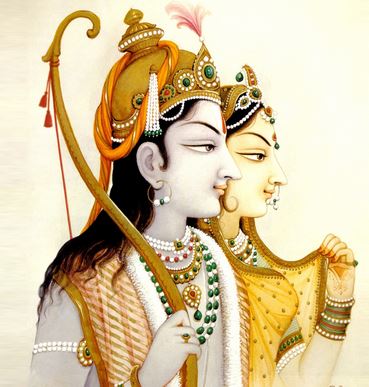 idealistic portrait of the perfect woman; Laksmana the loyal brother of Rama, youngest of all of the King of Ayodhya’s sons and the embodiment of dharma; Ravana the evil king, secure in his dispensation from Brahmā of a boon of invincibility. With the rise of the demon Rāvaṇa, Rāma and Lakṣmaṇa vow to help save the kingdom and the world from this evil doer and to promote and uphold dharma.
idealistic portrait of the perfect woman; Laksmana the loyal brother of Rama, youngest of all of the King of Ayodhya’s sons and the embodiment of dharma; Ravana the evil king, secure in his dispensation from Brahmā of a boon of invincibility. With the rise of the demon Rāvaṇa, Rāma and Lakṣmaṇa vow to help save the kingdom and the world from this evil doer and to promote and uphold dharma.
The celebration of Diwali as a victory of good over evil is based upon this great epic and refers not just to Rama’s final victory but to the deeper import it carries, the triumph of the light of higher knowledge over ignorance; a triumph over the ignorance that masks our true nature, the unchanging, infinite Self. The many schools of Hindu philosophy share this belief that there is something beyond the physical body and mind, something which is pure, infinite, and eternal, variously called the soul or the Atman. The Ramayana is thus allegorical, explores human values and the concept of dharma, depicts the duties of relationships and portrays ideal characters like the ideal father, the ideal servant, the ideal brother, the ideal wife, and the ideal king.
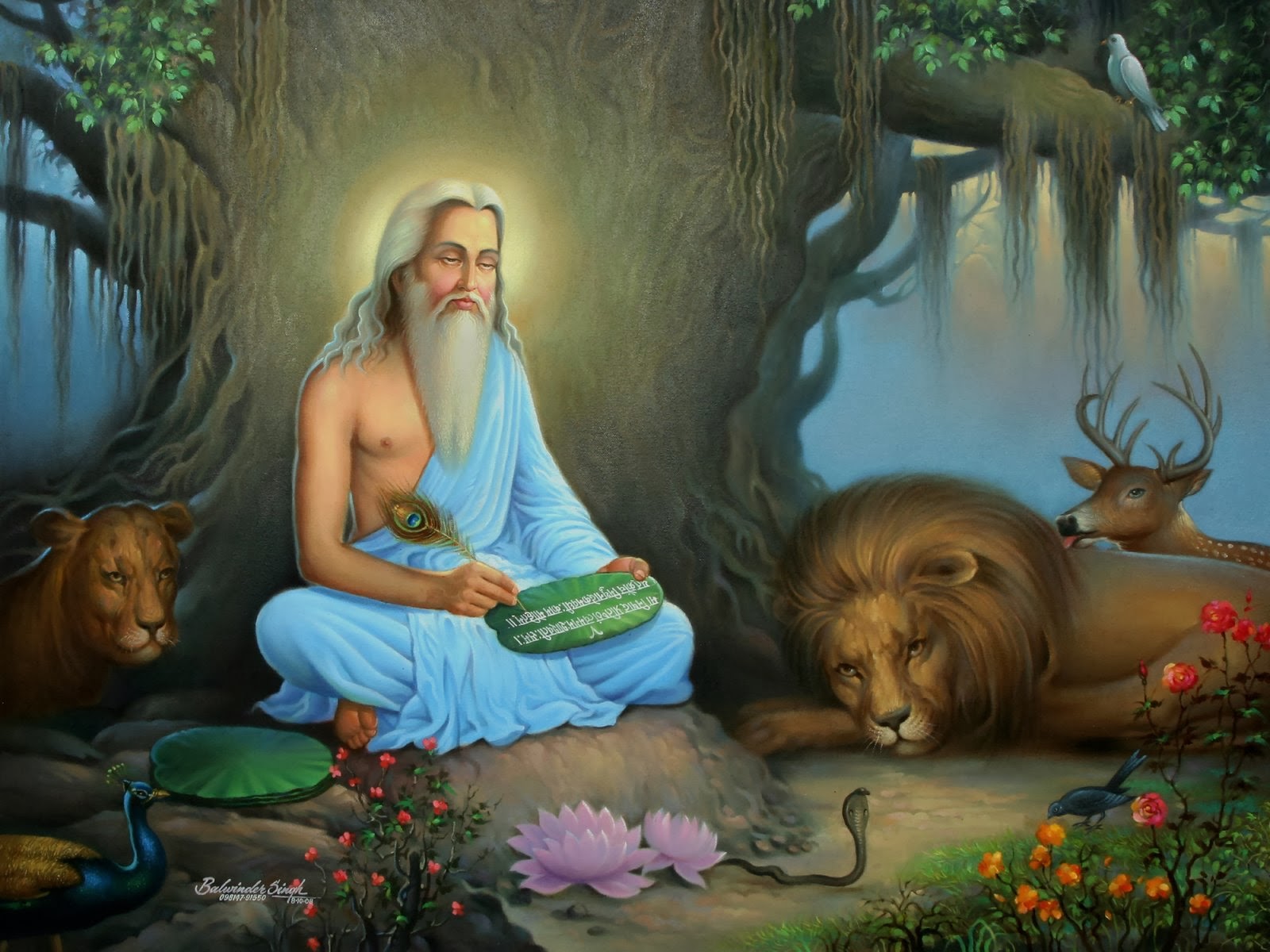 In The Rámáyan of Válmíkii the combatants are described in memorable words: “Gainst him, a mighty warrior too / Strong, as a soldier born and bred / Great, as a king whom regions dread / See! what a host the conqueror leads / With elephants, and cars, and steeds / O’er countless bands his pennons fly / So is he mightier far than I.”
In The Rámáyan of Válmíkii the combatants are described in memorable words: “Gainst him, a mighty warrior too / Strong, as a soldier born and bred / Great, as a king whom regions dread / See! what a host the conqueror leads / With elephants, and cars, and steeds / O’er countless bands his pennons fly / So is he mightier far than I.”
“…he wins success, And dying foes his power confess. / Tall and broad-shouldered, strong of limb,/ Fortune has set her mark on him./ Graced with a conch-shell’s triple line,/ His throat displays the auspicious sign./ High destiny is clear impressed / On massive jaw and ample chest,/ His mighty shafts he truly aims / And foemen in the battle tames.”
My own teacher Sri Chinmoy had a great love of the Ramayana and wrote a memorable and popular play about the life of Rama. On one occasion, speaking of Sita’s sacrifice and its deeper meaning he commented: “
“Women have one common name: sacrifice. They can sacrifice everything that they have and that they are, either for their dear ones or for an unknown, if not an unknowable, supreme Reality. From time immemorial, Indian women have been revealing the supernal beauty of sacrifice. An Indian wife is synonymous with an Indian sacrifice-heart.
“In the Ramayana, Sita became an incarnation of sacrifice. She cheerfully and unconditionally accepted the life of exile for fourteen years in order to be with her beloved Rama. Urmila, the wife of Rama’s younger brother, Lakshmana, made a similar and ever-memorable sacrifice. She allowed her beloved husband Lakshmana to follow his eldest brother into exile, although she could not go with him. She sacrificed the company of her dearest husband by cheerfully letting him fulfil his desire to be with his brother Rama.
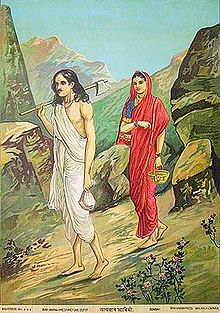 “Again, look at Savitri. Savitri’s love for Prince Satyavan touched the very depth of Immortality. When Death snatched him away, Savitri continued following the spirit of her husband until she proved to Death that nothing in God’s entire Creation could stand between her and her husband. Finally, Death had to return Satyavan to the world of the living, for the power of Savitri’s oneness-love for her husband far surpassed the division-power of Death.
“Again, look at Savitri. Savitri’s love for Prince Satyavan touched the very depth of Immortality. When Death snatched him away, Savitri continued following the spirit of her husband until she proved to Death that nothing in God’s entire Creation could stand between her and her husband. Finally, Death had to return Satyavan to the world of the living, for the power of Savitri’s oneness-love for her husband far surpassed the division-power of Death.
“Man’s inner strength is his poise. Woman’s inner strength is her love. When poise and love blend together in oneness-game, at that time true satisfaction, constant satisfaction, perfect satisfaction, infinite and immortal Satisfaction will dawn on earth.”
A sweeping and dramatic tale of abduction, battles and courtship played out against a wider canvas of cosmic gods, great armies and demons, the Ramayana is a wonderful portrait of human life and its often forgotten depths and existential truths, similar to the Greek legends like Homer’s Iliad or Odyssey, remaining popular through the course of time. The story of Rama summarizes the very nature of human life, the play of shadows and light, the timeless struggles and conflicting impulses of human existence, the dramas of the soul’s awakening into light.
